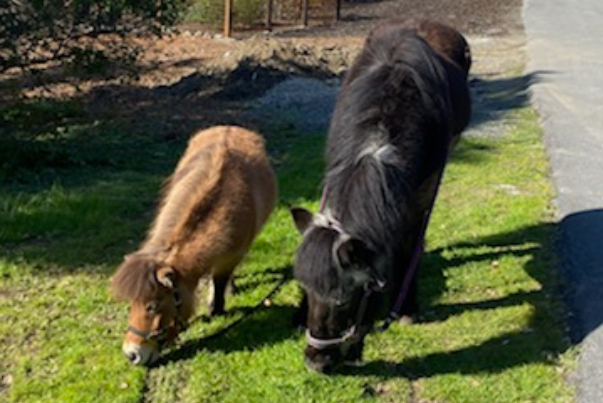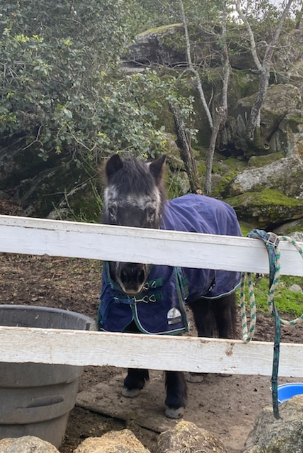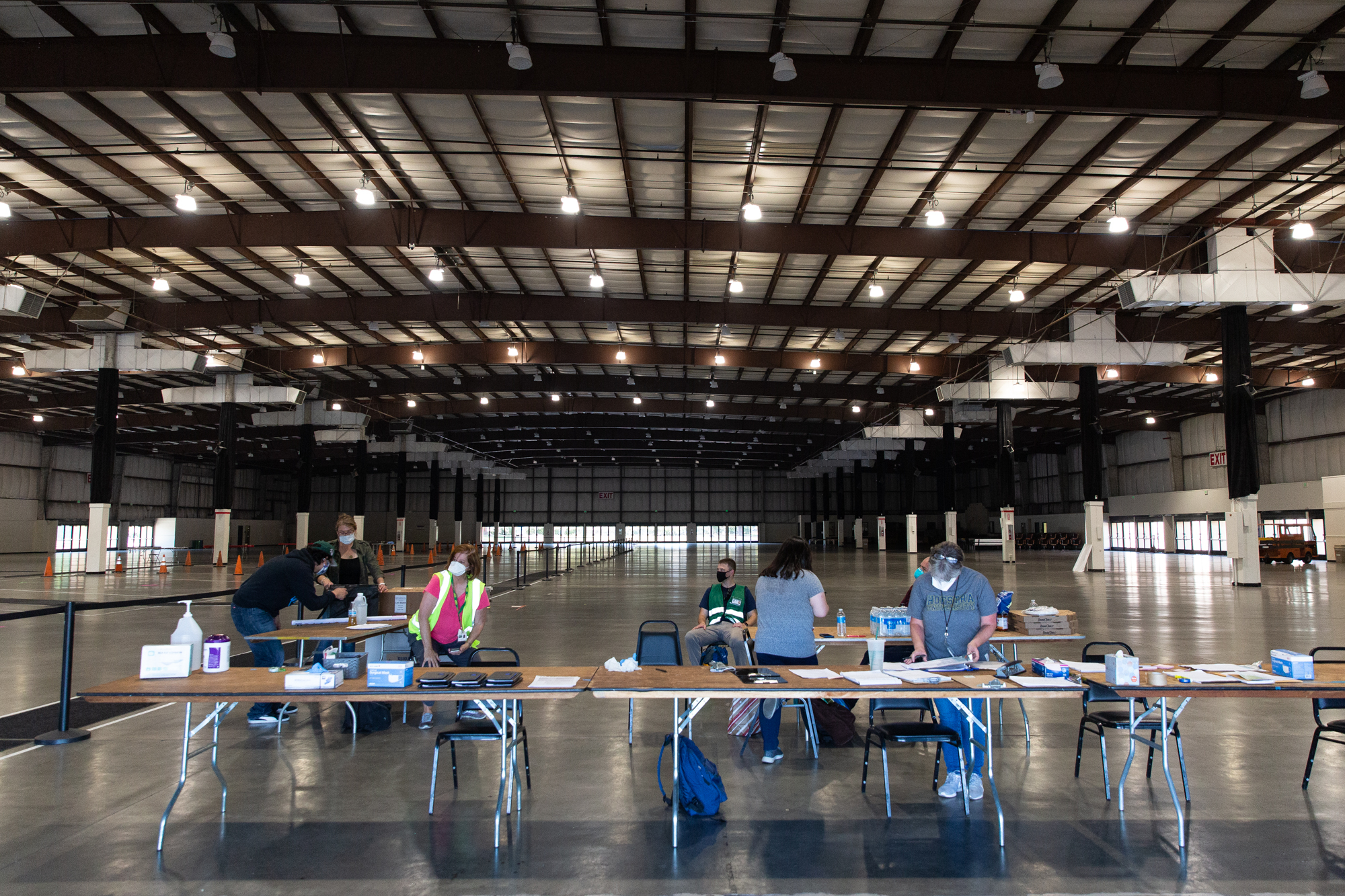Woodsider Chris Romano was working in her at-home office when she heard what sounded like a loud crack around 2:20 p.m. on Tuesday, June 21. Her neighbor, Carey Oberti, immediately picked up her phone to make sure Romano's elderly horse, Fudgy, could evacuate safely.
That cracking sound preceded the Edgewood Fire, which burned 20 acres on the first day of summer in Emerald Hills, bringing an early start to a fire season that typically begins in July. Thousands of residents were forced to evacuate and four firefighters suffered minor injuries during the fire, which was 100% contained as of Monday, June 27.
Another neighbor loaded Fudgy, an Icelandic horse, 35, into a borrowed truck (hers was in the shop) and away from the neighborhood on the the southern edge of Edgewood Park. Romano is legally blind and can't drive, so her neighbors wanted to make sure Fudgy, a beloved, docile animal who loves children, had a way to be brought to safety.
He was one of four horses that stayed with the horseback riding group Junior Riders on the other side of Interstate Highway 280 in Woodside, according to Kathi Dancer, the group's program director. He returned home on Friday, June 24.
"I'm so lucky and very, very happy to be in my house," said Romano. This marked the first time in their three decades in town that they've had to evacuate. "After the CZU (Lightning Complex) fires, I said, 'I've got to keep a go-bag.'"
Given Fudgy's age – 35 in horse years is closer to 100 in human years – Romano opted to have him stay closer to home. He'd also had four teeth extracted earlier in the day.
Organizing evacuations
Other owners brought their horses to Driscoll Ranch in La Honda or the San Mateo County Event Center in San Mateo, according to Robin Camozzi, president of the San Mateo County Large Animal Evacuation. The organization is a local nonprofit activated by Cal Fire during emergencies.
Because of the equine herpesvirus horses needed to go to a location that's sterile, meaning there aren't horses currently being housed there, said Lori Morton-Feazell, the county's animal control and licensing manager. Driscoll doesn't normally house large animals, so it fit the bill.
The county plans to purchase 20 to 30 portable horse pens so that in a future emergency it doesn't have to scramble to find a place already equipped with pens to host large animals, Morton-Feazell said. The county is lucky to have the large animal evacuation group though; a lot of counties don't have that resource, she said.
"Horses and large animals are lives," said Jeff Norris, the county's emergency management's district coordinator. "You don't want any animal to die because we're not prepared."
The county's planning is also hampered by the fact there are fewer venues to shelter large animals along the Peninsula now, he added. Bay Meadows no longer has a race track and the Cow Palace doesn't host many animal events anymore so their pens are not maintained, he said.
The large animal rescue group helped evacuate thousands of animals during the CZU fires in 2020. Camozzi's group helps transport animals to holding areas when people either don't have an evacuation plan or a way to get animals out (for example, their trailer is broken).
Camozzi said most people in Emerald Hills already have plans for where to move their animals in case of an emergency. Most people kept their horses locally at the Mounted Patrol of San Mateo County, Portola Farms and Woodside Horse Park, she said. Some people didn't move their animals because the evacuation order turned into an advisory by 9 p.m. on the day the fire ignited.
Dancer gave Emerald Hills residents the gate code and said "come on in" when she started getting texts asking for their horses to stay at Junior Riders.
"There's a good network of neighbors where we all know each other," Dancer said. There are even cartoon drawings of Fudgy (Romano is a cartoonist), who was part of Junior Riders' riding program years ago, up on their bulletin board.
Camozzi, who's kept horses her entire life and who runs Half Moon Bay Feed and Fuel (which also runs horse boarding facilities), got involved in large animal evacuation after a large fire in Santa Cruz in 1998.
"We were told we weren't certified to cross fire lines," she said. "I couldn't stand the idea of animals being left." She's been running the San Mateo County Large Animal Evacuation for 12 years.
Camozzi prefers moving animals as far away from the fire as possible because it can be more stressful for an animal to have to move multiple times, and acclimate all over again, than moving once. For example, during the CZU fires, horses spent three and half weeks with the evacuation group. During the Tubbs Fire in 2017, moving animals 10 miles wasn't far enough, she said.
"We're always going to pick something a little farther away because it's going to be safer and long term," Camozzi said. "With all the trees and the brush and kindling (in Edgewood Park), you don't know what way that fire is going to go."
The best way to contact the animal evacuation group during an emergency is to call 911 and ask for large animal evacuation, Camozzi said.






Comments
Registered user
Woodside: other
on Jun 30, 2022 at 12:27 pm
Registered user
on Jun 30, 2022 at 12:27 pm
Here is a link to a survey to gather first hand information on the evacuation and preparedness of those affected by the Edgewood fire. The goal is to gather the information, tips insights and preparedness level to help others should they need to evacuate. The results will be used to create an evacuation page on the WPV-Ready.org website. Thanks in advance for participating and sharing your experience and insights.
Web Link